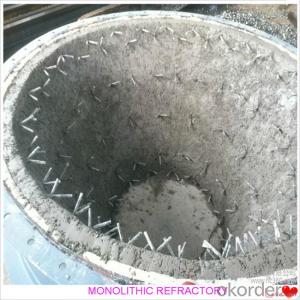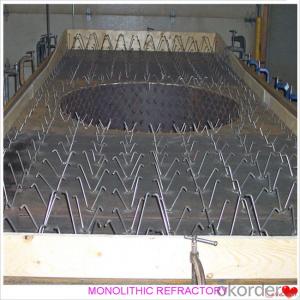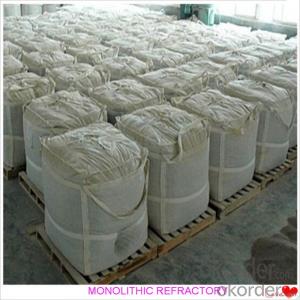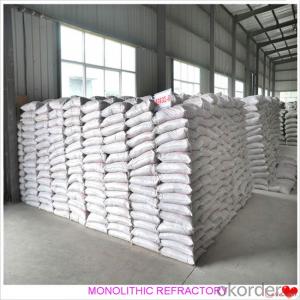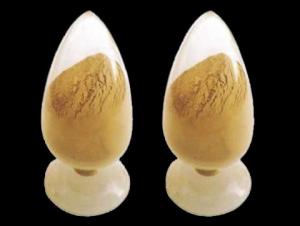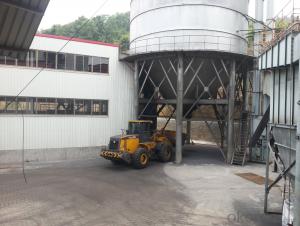Castable For Fireplace and Industrial Furnace Cement Industry
- Loading Port:
- China main port
- Payment Terms:
- TT OR LC
- Min Order Qty:
- 1000 kg
- Supply Capability:
- 3000000 kg/month
OKorder Service Pledge
OKorder Financial Service
You Might Also Like
Castable For Fireplace and Industrial Furnace Cement Industry
Product Description:
Gunning castable is manufactured according to international standards. The product is famous for its excellent abrasion resistance and low thermal conductivity. Further, these can be provided in different specifications as required by the clients. The gunning castables are used high purity raw materials and additives as the main material, and made of under superfine powder adding technology.
Product Advantages:
The material has excellent structural stability and air tightness, and has high physical and chemical properties, also has a fine working ability.They should be used with the same material products.
Product Applications:
For feature of gunning castable, they have excellent abrasion resistance, thermal shock resistance, high-temperature resistance, anti-corrode and have high intensity.
Designed for refractory lining of blast furnace iron and slag runners, skimmers and soon
They can be used in troughs of small and mid size BFs and in all positions of the troughs where fast tapping is required.
Product Specifications:
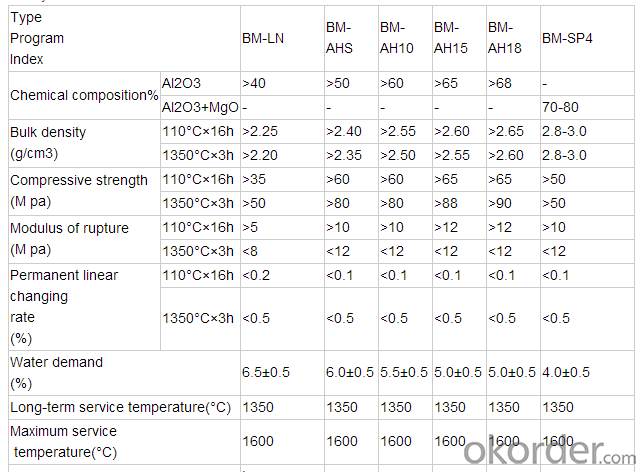
FAQ:
1. How you can control your quality?
For each production processing, we have complete QC system for the chemical composition
and Physical properties. After production, all the goods will be tested, and the quality certificate
will be shipped along with goods.
2. What's your delivery time?
It usually needs about 20days- 45 days after receiving the deposit.
3. Do you provide free samples?
Yes, we can provide a free sample for testing, If we have sample in stock,
The quantity based on the material type, The buyer should bear all the shipping costs.
4. What's your payment terms?
We can accept 30% deposit, 70% balance before shipment for ordrs over $ 2000.
5. Can we visit your Company?
Yes, certainly. You are very welcome to China and we will be honored to have a customer and friend.
Product Picture:
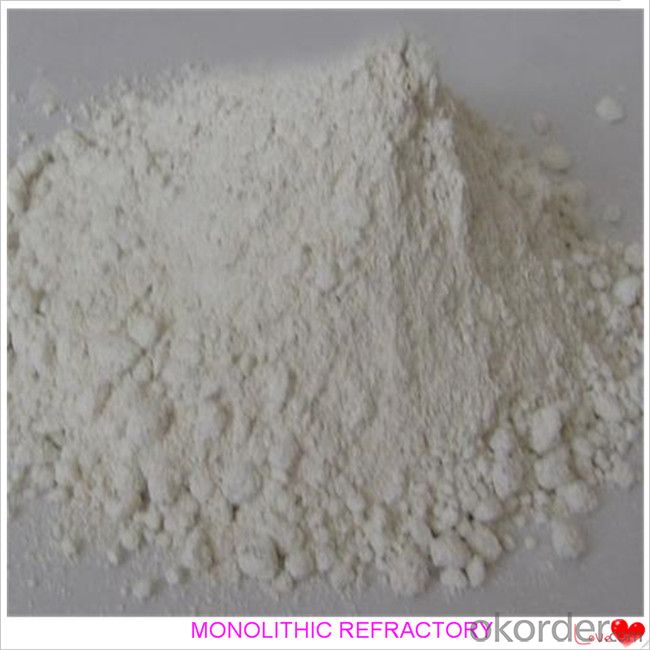
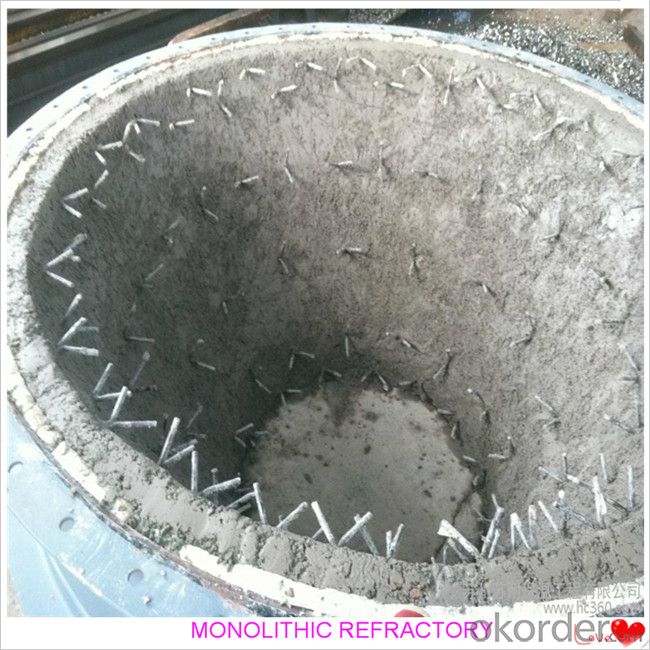
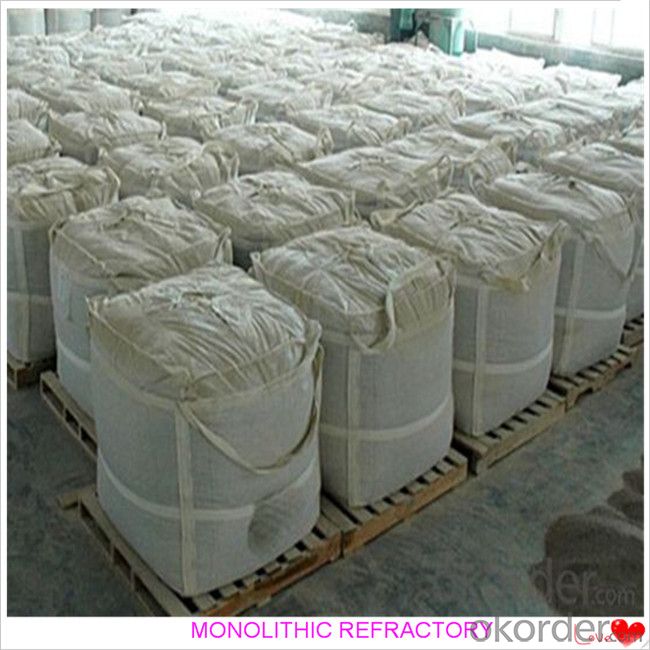
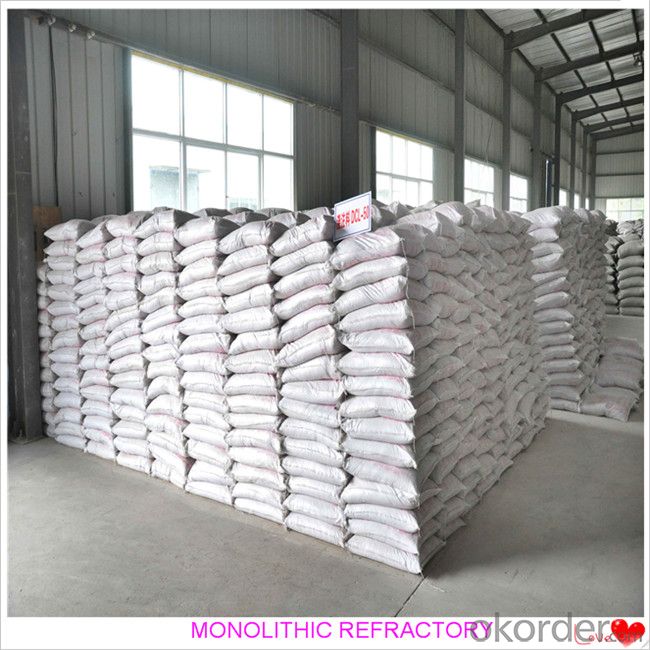
- Q:How do monolithic refractories contribute to the efficiency of iron and steel production?
- Monolithic refractories play a crucial role in improving the efficiency of iron and steel production by providing superior thermal insulation and resistance to high temperatures, resulting in reduced heat loss and improved energy efficiency. Additionally, these refractories offer excellent mechanical strength and chemical resistance, enabling them to withstand the harsh conditions within the production process, leading to increased durability and extended service life. Their ability to be easily shaped and installed also facilitates faster maintenance and repair, minimizing downtime and enhancing overall operational efficiency in the iron and steel industry.
- Q:What are the advantages of using castables in the iron and steel industry?
- There are several advantages of using castables in the iron and steel industry. 1. Excellent Thermal Insulation: Castables have a high thermal insulation property, which helps in maintaining the temperature of the molten metal. This prevents heat loss and ensures efficient energy usage, leading to cost savings. 2. High Refractory Strength: Castables are known for their high refractory strength, which allows them to withstand extreme temperatures and harsh operating conditions. This ensures the longevity and durability of the refractory lining, reducing the need for frequent repairs or replacements. 3. Versatility: Castables can be easily molded into various shapes and sizes, making them highly versatile for different applications in the iron and steel industry. This allows for customization and flexibility in designing the refractory lining to suit specific requirements. 4. Easy Installation: Castables can be installed quickly and easily, reducing downtime during installation or maintenance. Their ability to be applied as a monolithic lining eliminates the need for individual bricks or tiles, saving time and effort. 5. Resistance to Chemical Attack: Castables are resistant to chemical attacks from molten metal, slag, and other corrosive substances commonly encountered in the iron and steel industry. This ensures the integrity of the refractory lining and prevents contamination of the metal being processed. 6. Reduced Material Costs: Castables typically require fewer raw materials compared to traditional refractory bricks or tiles. This leads to cost savings in terms of material procurement, transportation, and storage, making castables a cost-effective solution. 7. Enhanced Production Efficiency: The use of castables in the iron and steel industry improves production efficiency by providing a smooth and uniform lining. This facilitates better heat transfer, improved metal flow, and reduced downtime, ultimately increasing overall productivity. In conclusion, the advantages of using castables in the iron and steel industry include excellent thermal insulation, high refractory strength, versatility, easy installation, resistance to chemical attack, reduced material costs, and enhanced production efficiency. These advantages make castables a preferred choice for lining furnaces, ladles, tundishes, and other equipment in the iron and steel manufacturing process.
- Q:How do monolithic refractories withstand the thermal cycling in aluminum smelting applications?
- Monolithic refractories have been specifically developed to endure the extreme thermal cycling conditions that arise in aluminum smelting applications. The exceptional properties of these refractories enable them to withstand the rapid and repetitive heating and cooling cycles without experiencing significant damage or failure. A key characteristic of monolithic refractories is their remarkable thermal shock resistance, which allows them to withstand sudden temperature changes without cracking or spalling. Throughout the aluminum smelting process, the refractories are exposed to extreme temperatures when molten aluminum is poured into the molds or when the molten metal comes into contact with the refractory lining. It is essential for the refractories to quickly absorb and dissipate heat to prevent any thermal shock damage. Furthermore, monolithic refractories possess a high thermal conductivity, which facilitates the efficient transfer of heat away from the refractory lining. This effectively reduces the risk of thermal stress and thermal fatigue. By dispersing the heat generated during the smelting process, the refractories minimize temperature variations within the lining, thereby preventing the occurrence of cracks or fractures. Moreover, monolithic refractories exhibit excellent chemical resistance, a crucial characteristic in aluminum smelting applications. These refractories are formulated to resist the corrosive effects of molten aluminum and other chemicals present in the smelting process. By offering resistance to chemical corrosion, the refractories help maintain the integrity of the refractory lining and extend its service life. Additionally, monolithic refractories are often reinforced with fibers or other structural materials to enhance their mechanical strength and durability. These reinforcements provide added resistance against mechanical stresses, such as thermal expansion and contraction, which arise during the thermal cycling process. In conclusion, the purpose of monolithic refractories is to withstand the thermal cycling conditions encountered in aluminum smelting applications. Their exceptional thermal shock resistance, high thermal conductivity, excellent chemical resistance, and enhanced mechanical strength enable them to endure extreme temperature fluctuations without experiencing significant damage. These refractories play a crucial role in maintaining the integrity and efficiency of the smelting process in the aluminum industry.
- Q:How do monolithic refractories withstand thermal shock and mechanical stress?
- Monolithic refractories are engineered to endure high temperatures and harsh working conditions, making them perfect for applications involving thermal shock and mechanical stress. To begin with, monolithic refractories are designed with a high thermal conductivity, enabling them to rapidly absorb and distribute heat. This characteristic aids in reducing thermal gradients within the material and decreasing the likelihood of thermal shock. When faced with sudden temperature changes, the refractory material expands and contracts uniformly, preventing the formation of cracks and fractures. Additionally, these refractories possess exceptional thermal shock resistance due to their low thermal expansion coefficient. As a result, they are less prone to expanding or contracting when exposed to temperature fluctuations. Consequently, they can endure rapid temperature changes without suffering significant structural damage. Furthermore, monolithic refractories exhibit high mechanical strength, enabling them to withstand various forms of mechanical stress. Their formulation includes carefully selected raw materials and additives that enhance their load-bearing capacity and resistance to mechanical forces. This grants them the ability to bear the weight of surrounding materials and endure any external forces or vibrations present in the application environment. Moreover, monolithic refractories maintain good structural integrity and stability thanks to their dense and compact microstructure. Typically, these materials are created by combining fine powders, binders, and additives, which are mixed and shaped to form a solid and cohesive structure. This structure provides resistance against mechanical stress, preventing the refractories from crumbling or disintegrating under pressure. In conclusion, monolithic refractories withstand thermal shock and mechanical stress due to their high thermal conductivity, low thermal expansion coefficient, strong mechanical strength, and structural integrity. These properties establish them as reliable and durable materials for applications that require resistance to extreme temperatures and challenging operating conditions.
- Q:How are monolithic refractories different from conventional refractories?
- There are several ways in which monolithic refractories differ from conventional refractories. To begin with, conventional refractories are typically constructed using pre-formed shapes like bricks or tiles, whereas monolithic refractories are shapeless and can be installed through casting, gunning, or ramming. This allows for greater design and installation flexibility since monolithic refractories can be molded to fit any complex shape or size requirement. Additionally, monolithic refractories possess a higher level of thermal shock resistance compared to conventional refractories. This means that they can withstand rapid temperature changes without cracking or spalling. This characteristic is especially significant in applications where the refractory is exposed to extreme temperature fluctuations, such as in furnaces or kilns. Moreover, monolithic refractories exhibit superior corrosion resistance, making them more suitable for environments with acidic or alkaline conditions. They are also renowned for their exceptional mechanical strength and resistance to abrasion, making them ideal for situations where the refractory experiences high mechanical stress or wear. Lastly, monolithic refractories offer enhanced energy efficiency due to their lower thermal conductivity. Consequently, they can retain heat more effectively, resulting in reduced energy consumption and cost savings. In summary, the key distinctions between monolithic refractories and conventional refractories lie in their installation methods, thermal shock resistance, corrosion resistance, mechanical strength, and energy efficiency. These factors establish monolithic refractories as the preferred choice in numerous industrial applications where flexibility, durability, and performance are of utmost importance.
- Q:How do monolithic refractories perform in electric arc furnace roof applications?
- Due to their unique properties and characteristics, monolithic refractories are extremely effective when used in electric arc furnace (EAF) roof applications. Comprised of a single, solid material, these refractories offer several advantages specific to this application. To begin with, monolithic refractories provide exceptional thermal insulation, a critical factor in EAF roof applications. Traditional brick refractories can suffer structural damage from the intense heat generated in the furnace. However, monolithic refractories possess a higher resistance to thermal shock, reducing the risk of cracking and spalling. This ensures that they maintain their integrity and insulation properties even under extreme temperature conditions. Furthermore, monolithic refractories exhibit high strength and abrasion resistance, guaranteeing their durability and longevity in EAF roof applications. The roof of an electric arc furnace is subjected to harsh conditions, including the impact of scrap materials and the erosive effects of molten metal and slag. Monolithic refractories are specifically designed to withstand these challenges, offering superior resistance to mechanical wear and erosion. Another advantage of monolithic refractories lies in their ease of installation. Unlike traditional brick refractories, which necessitate time-consuming and complex installation processes, monolithic refractories can be applied rapidly and efficiently. They can be cast, gunned, or sprayed onto the roof surface, adapting to any shape or contour. Consequently, installation or repair downtime is reduced significantly. Moreover, monolithic refractories contribute to increased energy efficiency in EAF roof applications. Their superior insulation properties minimize heat loss, resulting in reduced energy consumption and cost savings. This is particularly crucial for electric arc furnaces, as their efficiency and productivity heavily rely on maintaining high temperatures for metal melting and processing. Any heat loss can have a significant impact on these factors. In conclusion, monolithic refractories are highly suitable for electric arc furnace roof applications due to their exceptional thermal insulation, strength, abrasion resistance, ease of installation, and energy efficiency. These refractories offer significant advantages over traditional brick refractories, ensuring optimal performance and extended service life in the demanding environment of an electric arc furnace.
- Q:What are the cost implications of using monolithic refractories in the iron and steel industry?
- The use of monolithic refractories in the iron and steel industry can have various cost implications. Firstly, the initial cost of monolithic refractories tends to be higher compared to traditional brick refractories. Monolithic refractories are typically made from high-quality raw materials and require specialized installation techniques, leading to higher upfront expenses. However, these higher upfront costs can be offset by the benefits provided by monolithic refractories in terms of performance, durability, and reduced maintenance requirements. One of the major cost implications of using monolithic refractories is their extended service life. Monolithic refractories have excellent thermal shock resistance and can withstand high temperatures, mechanical stress, and corrosive environments. This results in reduced downtime and fewer replacement or repair needs, leading to overall cost savings in the long run. Additionally, monolithic refractories offer flexibility in design and application. They can be easily shaped and installed to fit complex geometries, resulting in optimized furnace linings and improved energy efficiency. By minimizing heat loss, monolithic refractories can reduce fuel consumption and lower energy costs for the iron and steel industry. Furthermore, the installation and maintenance of monolithic refractories can be less labor-intensive compared to brick refractories. This can result in reduced labor costs and shorter installation time, leading to potential cost savings for the industry. Another cost implication of using monolithic refractories is their impact on productivity. Monolithic refractories provide improved thermal insulation, reduced slag adhesion, and enhanced resistance to wear and erosion. These properties can lead to increased production rates, improved product quality, and minimized process interruptions, ultimately translating into higher profitability for iron and steel manufacturers. It is important to note that the cost implications of using monolithic refractories can vary depending on the specific application, furnace type, and operating conditions. Therefore, a thorough cost-benefit analysis should be conducted to evaluate the overall economic impact of implementing monolithic refractories in the iron and steel industry.
- Q:Can monolithic refractories be used for the lining of reheating furnaces and walking beam furnaces?
- Yes, monolithic refractories can be used for the lining of reheating furnaces and walking beam furnaces. Monolithic refractories are a type of refractory material that is characterized by its ability to be cast or gunned into place, rather than being made up of individual bricks or precast shapes. This makes them highly versatile and adaptable for various furnace applications, including reheating furnaces and walking beam furnaces. Reheating furnaces are used to heat metal products to a specific temperature before further processing, such as rolling or forging. The lining of these furnaces is subjected to high temperatures, thermal cycling, and mechanical stress. Monolithic refractories are well-suited for these conditions, as they have excellent thermal shock resistance and can withstand rapid temperature changes without cracking or spalling. Walking beam furnaces are used in the steel industry for the continuous heating and transport of steel slabs or billets. These furnaces require a lining material that can withstand the abrasion and mechanical stress caused by the movement of the material. Monolithic refractories with high abrasion resistance and good mechanical strength are ideal for the lining of walking beam furnaces. Additionally, monolithic refractories offer other advantages such as easy installation, reduced downtime for repairs, and improved energy efficiency. They can be tailored to specific furnace designs and can be easily repaired or replaced when necessary. In conclusion, monolithic refractories are a suitable choice for the lining of reheating furnaces and walking beam furnaces due to their ability to withstand high temperatures, thermal cycling, mechanical stress, and abrasion. Their versatility, ease of installation, and repair make them a preferred option for these furnace applications.
- Q:What are the main types of monolithic refractories used in the iron and steel industry?
- The main types of monolithic refractories used in the iron and steel industry are castables, plastic refractories, and ramming mixes.
- Q:How are monolithic refractories different from traditional refractories?
- Monolithic refractories are different from traditional refractories in terms of their composition, installation method, and performance characteristics. Firstly, monolithic refractories are composed of a single material, as the name suggests, whereas traditional refractories are typically made up of multiple materials. This single material composition of monolithic refractories allows for better control over their properties and performance. Secondly, the installation of monolithic refractories is different from traditional refractories. Traditional refractories are usually installed in the form of bricks or precast shapes, which are assembled together to form the desired lining. On the other hand, monolithic refractories are supplied in a ready-to-use form, such as a dry mix or a suspension, which is then poured, sprayed, or gunned into place. This makes the installation process of monolithic refractories faster and more efficient. Lastly, monolithic refractories offer superior performance characteristics compared to traditional refractories. Monolithic refractories have better thermal shock resistance, higher hot strength, and improved resistance to chemical attacks. Additionally, they can be more easily repaired or patched compared to traditional refractories, which often require the replacement of entire bricks or shapes. Overall, the main differences between monolithic refractories and traditional refractories lie in their composition, installation method, and performance characteristics. Monolithic refractories offer better control over properties, easier installation, and superior performance, making them a preferred choice in many industrial applications.
1. Manufacturer Overview |
|
|---|---|
| Location | |
| Year Established | |
| Annual Output Value | |
| Main Markets | |
| Company Certifications | |
2. Manufacturer Certificates |
|
|---|---|
| a) Certification Name | |
| Range | |
| Reference | |
| Validity Period | |
3. Manufacturer Capability |
|
|---|---|
| a)Trade Capacity | |
| Nearest Port | |
| Export Percentage | |
| No.of Employees in Trade Department | |
| Language Spoken: | |
| b)Factory Information | |
| Factory Size: | |
| No. of Production Lines | |
| Contract Manufacturing | |
| Product Price Range | |
Send your message to us
Castable For Fireplace and Industrial Furnace Cement Industry
- Loading Port:
- China main port
- Payment Terms:
- TT OR LC
- Min Order Qty:
- 1000 kg
- Supply Capability:
- 3000000 kg/month
OKorder Service Pledge
OKorder Financial Service
Similar products
New products
Hot products
Related keywords
